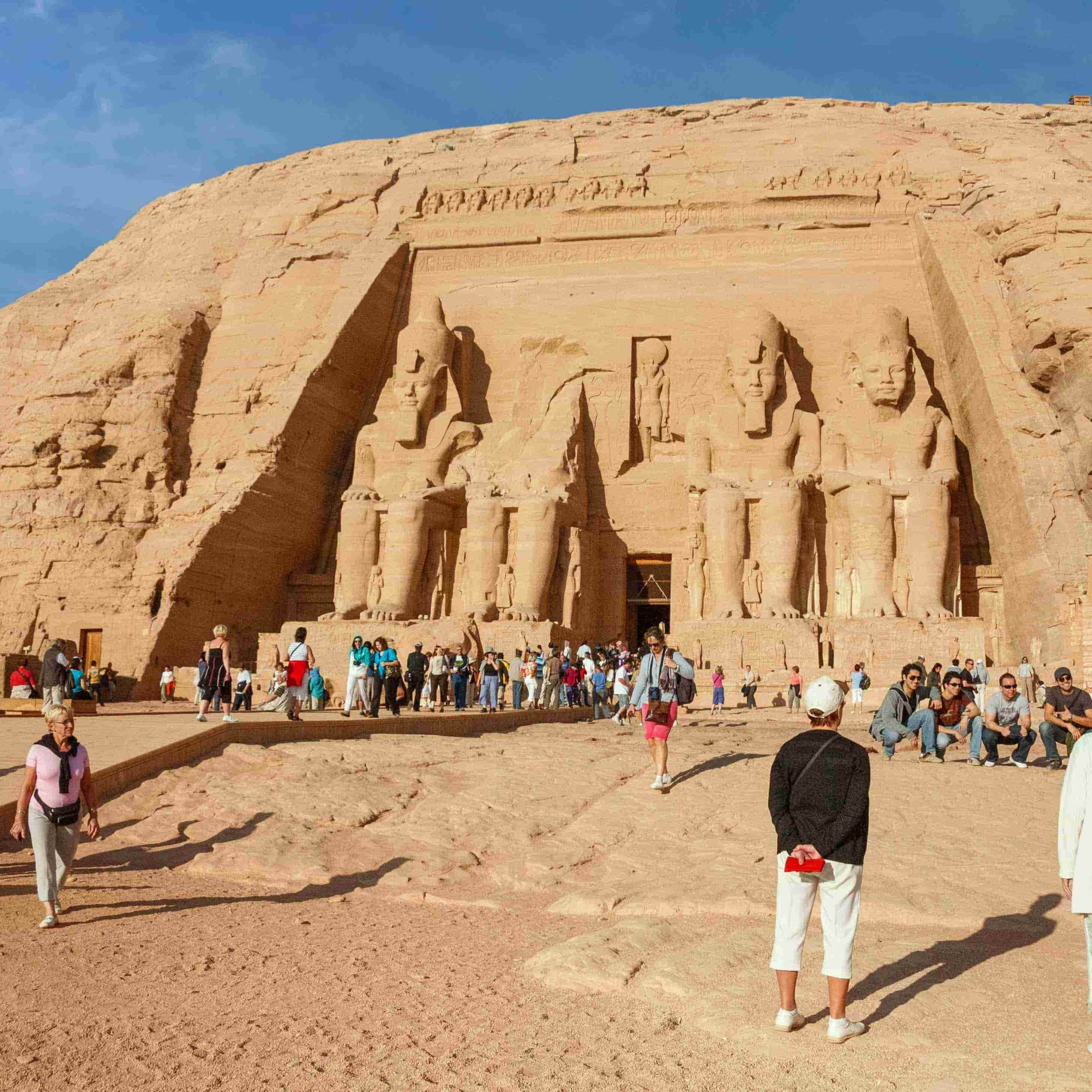Welcome to Top Ten Egypt Tours’ immersive journey through the enchanting world of Egyptian history and architecture. In this installment, we set our sights on one of the most awe-inspiring monuments along the Nile – The Great Temple of Abu Simbel. Prepare to be captivated by the grandeur of ancient Nubian architecture as we delve into the fascinating history and significance of this remarkable UNESCO World Heritage site.
The Marvelous Abu Simbel:
Nestled on the western bank of Lake Nasser, the Great Temple of Abu Simbel stands as a testament to the ingenuity of ancient Egyptian engineering and the might of Pharaoh Ramses II. Carved into the solid rock during the 13th century BCE, this colossal temple complex is dedicated to the gods Ra-Harakhty, Ptah, and Amun, as well as to the deified Ramses II himself.
Constructed during the reign of Pharaoh Ramesses II (1279-1213 BCE), the temple is dedicated to the pharaoh and his beloved wife Nefertari. It is a masterpiece of ancient Egyptian architecture, featuring intricate carvings, hieroglyphics, and colossal statues that have stood the test of time for over 3,000 years.
The Temple’s Grand Facade:
The exterior of Abu Simbel is a breathtaking sight to behold. Four colossal seated statues of Ramses II, each measuring an impressive 20 meters in height, guard the entrance. Their intricate detailing showcases the artistic prowess of the ancient Nubian craftsmen. The imposing figures, with their regal expressions, create an aura of strength and divine authority.
Inner Sanctum: A Journey through Time
Step beyond the temple’s colossal facade, and you’ll find yourself immersed in a series of awe-inspiring chambers adorned with intricate reliefs and vibrant murals. The most captivating of these is the Hypostyle Hall, boasting eight towering pillars adorned with depictions of the pharaoh’s military victories and divine connections.
The inner sanctuary houses colossal statues of the primary deities, illuminated by the sun twice a year during the solar phenomenon known as the “Sun Festival.” This alignment highlights the dedication of ancient architects to solar symbolism, emphasizing the temple’s connection to the divine.
Relocation: A Herculean Endeavor
In a remarkable feat of modern engineering and international cooperation, the Great Temple of Abu Simbel was relocated in the 1960s to save it from the rising waters of Lake Nasser due to the construction of the Aswan High Dam. The meticulous process involved dismantling the temple and reassembling it on higher ground, preserving this cultural treasure for future generations.
Visiting Abu Simbel: Practical Information
Getting There: The easiest way to reach Abu Simbel is by air, with regular flights from Cairo and Aswan.
Timing: Visit during the biannual Sun Festival (February 22 and October 22) for a unique experience.
Guided Tours: Engage in the expertise of local guides who can unravel the temple’s mysteries and history.
The Great Temple of Abu Simbel stands not only as a testament to the grandeur of ancient Nubian architecture but also as a symbol of human determination to preserve and celebrate our shared heritage. As you marvel at the colossal statues and intricate carvings, let the echoes of the past transport you to a time when pharaohs ruled the banks of the mighty Nile, and gods were honored in stone.
Embark on a journey with Top Ten Egypt Tours, and let the wonders of Abu Simbel be the starting point of your exploration into the rich tapestry of Egypt’s historical marvels.



Comment (0)